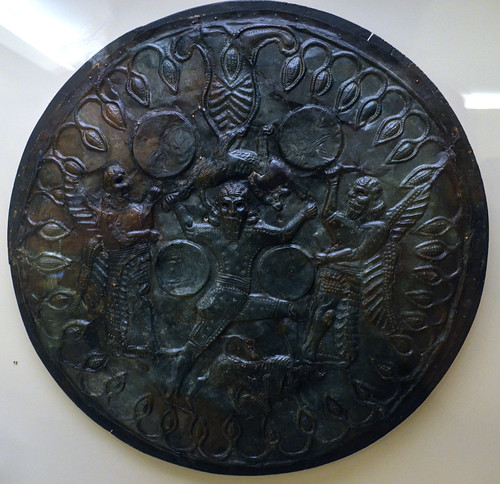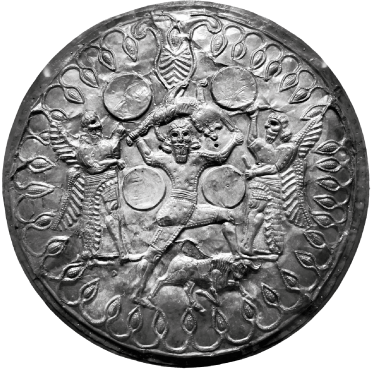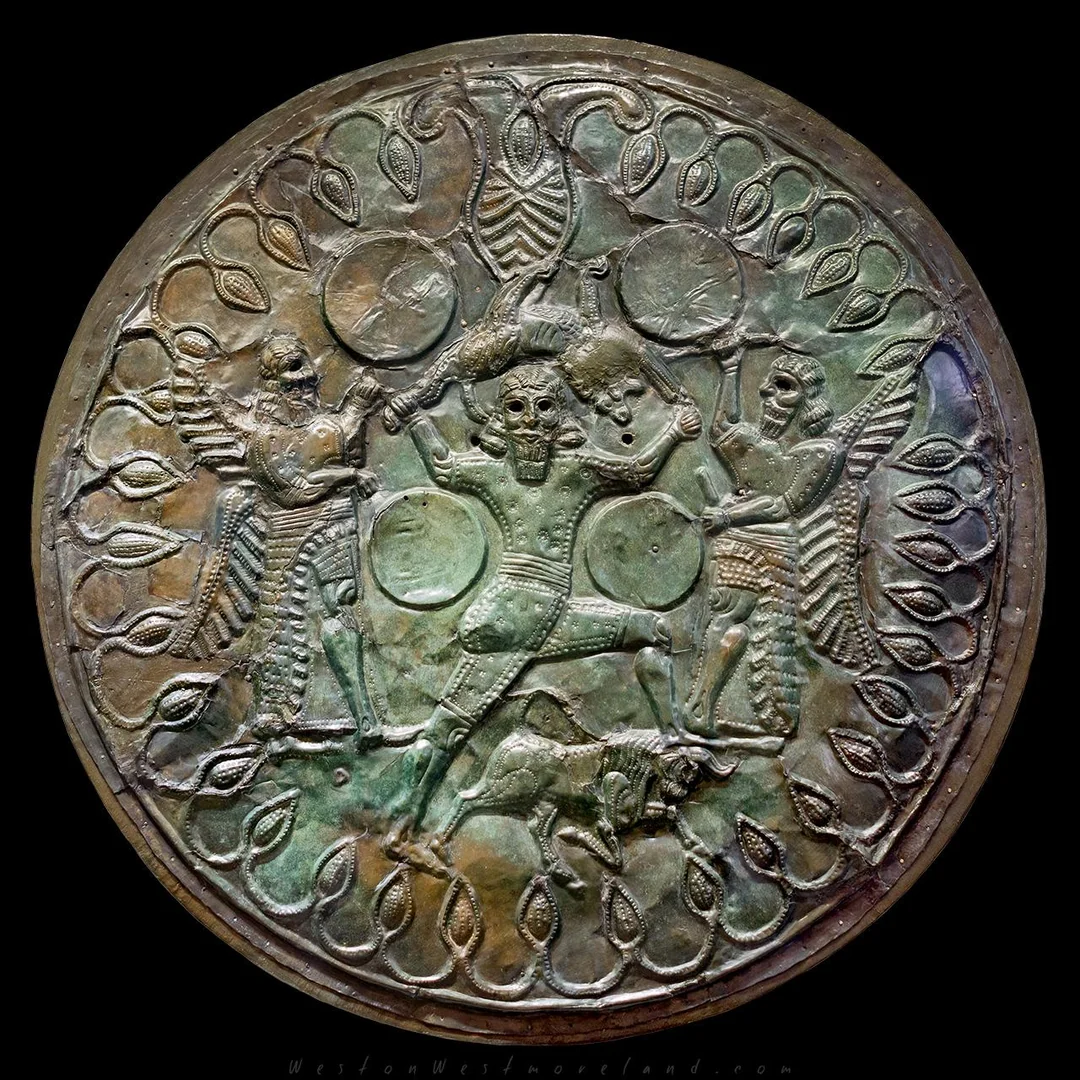Bronze Drum from the Idaean Cave

In ancient Greece, the tympanon was a type of circular, shallow tambourine, played either with the palm of the hand or with a stick. This particular example dates to the 8th century BCE and is considered the earliest representation of the instrument in Greek art. It was found as a votive bronze disc in the Idaean Cave, among a remarkable collection of offerings.

The drums and shields from the cave, some of the finest masterpieces of the ancient world, date to the 8th and 7th centuries BCE and are richly decorated with incised and embossed scenes. These objects were deposited as votive offerings alongside exceptional works in ivory, bronze, and gold.

This bronze tympanon stands out for the religious significance of its elaborate decoration. At the center of the disc is a commanding, bearded male figure seizing a lion, his left foot pressing on a bull. Flanking him are two winged “daemons” of Assyrian origin, each holding similar drum-like discs. The composition is framed by an intricate floral motif.

As the Idaean Cave was associated with the myths of Zeus’s birth and upbringing, the scene is interpreted as the Cretan myth of Zeus and the Curetes (or Corybantes). These daemons struck their swords against their shields to mask the cries of the infant Zeus, who was being hidden and raised in the cave to protect him from his father, Cronus, who devoured his own children.











